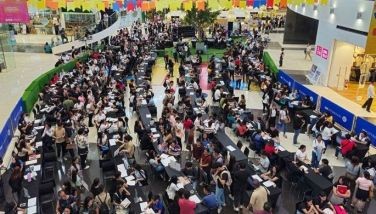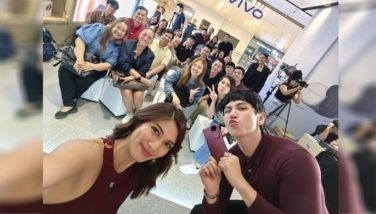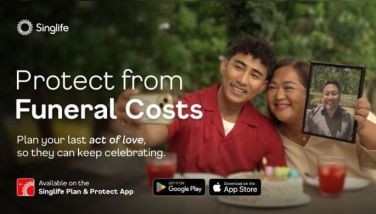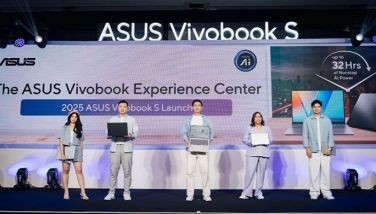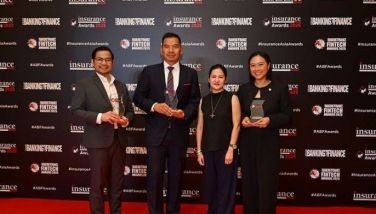Through Fields of Punkadelia
April 10, 2005 | 12:00am
"I’ve… seen things." (Replicant Roy Batty in Blade Runner)
It’s hard to believe, but once upon a time, I would have gladly waded through crowds and smoke and punk paraphernalia – just to see bands perform live.
This was about 1988-1992, that pivotal crest in history when the ’80s rose to a peak and crashed headlong into the ’90s.
Flashbulb memories. You catch a glimpse, and a glimpse is enough. Punk didn’t sweep me up. The music was more of a tonic than a lifestyle. I didn’t adopt the fashion. Rather, I trailed along behind, on the edge, taking pictures of the pretty debris. I was a college DJ. That helped with the access: free passes, guest lists to see most punk bands that passed through Providence, Rhode Island on their way to Boston.
Places like Lupo’s Heartbreak Hotel or The Living Room were favorites: spacious wooden barns with long bars, and Rolling Rock for $1.50 a bottle. In those heady days, you could catch the Bad Brains one weekend – all nasty fury and revved-up punk one minute, skanked-up reggae the next; the next weekend it would be Big Black, Live Skull, or Gun Club, with Jeffrey Lee Pierce’s wailing white blues fueled by Kid Congo Powers’ guitar slabs.
We liked the SST bands the best, the hardcore California outfits that mixed skateboard punk with long-haired hippie sludge. One night, Black Flag came to town. Guitarist Gregg Ginn’s opening side band, Gone, managed to clear The Living Room by playing the most ear-splitting noise imaginable, so loud that everyone had to go out to the parking lot to finish their Rolling Rocks. By the time the Flag took the stage, we had regained our hearing, and they played a tight, bass-driven set punctuated by violent moshing while the pre-steroidal Henry Rollins paced and prowled the stage, wearing nothing but gym shorts, back-length hippie hair and tattoos, leering like a homicidal game show host.
These were pivotal moments.
This was what music was all about.
Check the club listings on any given week, and you could catch up-and-coming 4AD bands from the Boston area, like Throwing Muses or the legendary Pixies. Kristen Hersh of Throwing Muses cradled her guitar like an electrified asp, all the while shrieking and staring into the crowd like a devotee of EST. Then there were the Pixies – back before they were Big Punk Gods. Black Francis would be up there, lazily strumming and singing David Lynch’s Heaven from Eraserhead. Later, down on the Living Room floor, you could play a game of foosball with Kim Deal and share a Rolling Rock with guitarist Joey Santiago. (Francis had long ago disappeared.) They were just folks back then.
Punk wasn’t meant to last. It wasn’t a long-term investment. Punk never gave you much back in return besides the good times, the energy you soaked up – like the sawdust on the floor soaked up the beer, the sweat, the vomit. These weren’t virtuosos up on stage, but for a while it seemed that what punk had to offer was more vibrant, more real, more alive than a million Yngwie Malmsteen solos.
The Living Room was my first experience of Sonic Youth, back when the crowd was more interested in ogling bassist Kim Gordon than in what Thurston Moore and Lee Renaldo were trying to coax along by bashing their headstocks. Later, I would see them perform in Boston, tighter and more brat-punk than before (a relatively unknown New York band – Versus, said to be half-Pinoy – were the opening act). Much later, I would see Sonic Youth ride across waves of feedback and noise-love here in the Philippines.
In the late ’80s, you had your pick of punk legends to see. Elvis Costello and the Attractions stormed into the Boston Garden one night, living up to the "angry nerds of punk" label. Another night, the Clash came to play an unlikely venue: the Worcester Centrum, a big hockey rink that just wasn’t prepared for the thumping rockabilly shred the band cranked out. Most people just came to hear "Rock the Casbah." Strummer proceeded to unleash a vicious set of throbbing dub beats and harsh riffs. Even from 75 feet away, as the band leapt about like pissed-off, boiler-suit-clad ants, we knew they meant it.
We would come from as far away as Cape Cod to check out Hüsker Dü, expecting an apotheosis and being darkly disappointed by their speed-cranked, perfunctory set. We didn’t realize the band was self-destructing onstage and would be kaput within a few months’ time.
When Boston became our musical turf (moving there in 1998), the meccas moved to places like The Paradise, The Rat, or Avalon, where The Cramps came to town one Halloween: watching as singer Lux Interior consumed a bottle of red wine onstage (one-third pouring down his bare chest), then proceeded to finish his set writhing on the ground like some kind of larva, twisting the microphone cord around his sweaty, wine-soaked carcass, screaming into his mike like the unholiest of bowel movements. Punk lived then. It was great.
Or watching legendary New York Dolls guitarist Johnny Thunders – a notorious junkie – strum his way through a lethargic, half-whispered set that seemed inspired only by his need to feed a heroin habit.
Or catching noise guitarist Sonny Sharrock in a dark Somerville club, managing to coax the sound of a thousand shards of glass scraping against metal, using nothing but a pick, a slide and the martial flailing of his digits.
Or seeing bands like the Meat Puppets wear their grunge attitude and flannel shirts long before Seattle caught on.
Or watching a raging stick known as PJ Harvey command the stage with nothing but a drummer, a hollow-body guitar and her unnatural banshee wail.
Or enduring the loudest band in existence, The Jesus and Mary Chain, during a Boston gig that was memorable for the permanent damage it did to my hearing (I still have trouble with my high frequencies; they sound like mud). Their bass-and-guitar volume punched cannon holes through our eardrums, and the only other lingering memory I have of the set is the smell of smoke. They were preceded by Spiritualized, who worked their slow-chugging numbers into quiet little diamonds of intensity and speed-chaos, coming as close to the Velvet Underground as our generation will probably ever get.
I was happy and privileged to catch the great Frank Zappa on two occasions, during both of which he lifted his boycott on the guitar and played the crowd several extended solos (cigarette still burning while wedged between the tuning pegs).
Then there was the Godfather of Punk, Lou Reed, who I caught at Boston’s Orpheum Theater during his "Legendary Hearts" tour. Lou seemed pretty out of it that night, his eyes dead disks, the words to his greatest hits reeled off like tax statements. But the band helped perk things up: Fernando Saunders insinuating his fretless bass figures as guitarist Robert Quine (in shades) worked himself into a sweatless frenzy. When ‘Ol Lou left the stage after the encore, I flashed him the "L" sign from the front row – I know he saw me, because he stopped and did a double-take in my direction. But I’m not sure if he thought I meant "Loser" instead of "Lou." Anyway, it was a strange, sad epilogue to all my punk journeying.
It’s hard to believe, but once upon a time, I would have gladly waded through crowds and smoke and punk paraphernalia – just to see bands perform live.
This was about 1988-1992, that pivotal crest in history when the ’80s rose to a peak and crashed headlong into the ’90s.
Flashbulb memories. You catch a glimpse, and a glimpse is enough. Punk didn’t sweep me up. The music was more of a tonic than a lifestyle. I didn’t adopt the fashion. Rather, I trailed along behind, on the edge, taking pictures of the pretty debris. I was a college DJ. That helped with the access: free passes, guest lists to see most punk bands that passed through Providence, Rhode Island on their way to Boston.
Places like Lupo’s Heartbreak Hotel or The Living Room were favorites: spacious wooden barns with long bars, and Rolling Rock for $1.50 a bottle. In those heady days, you could catch the Bad Brains one weekend – all nasty fury and revved-up punk one minute, skanked-up reggae the next; the next weekend it would be Big Black, Live Skull, or Gun Club, with Jeffrey Lee Pierce’s wailing white blues fueled by Kid Congo Powers’ guitar slabs.
We liked the SST bands the best, the hardcore California outfits that mixed skateboard punk with long-haired hippie sludge. One night, Black Flag came to town. Guitarist Gregg Ginn’s opening side band, Gone, managed to clear The Living Room by playing the most ear-splitting noise imaginable, so loud that everyone had to go out to the parking lot to finish their Rolling Rocks. By the time the Flag took the stage, we had regained our hearing, and they played a tight, bass-driven set punctuated by violent moshing while the pre-steroidal Henry Rollins paced and prowled the stage, wearing nothing but gym shorts, back-length hippie hair and tattoos, leering like a homicidal game show host.
These were pivotal moments.
This was what music was all about.
Check the club listings on any given week, and you could catch up-and-coming 4AD bands from the Boston area, like Throwing Muses or the legendary Pixies. Kristen Hersh of Throwing Muses cradled her guitar like an electrified asp, all the while shrieking and staring into the crowd like a devotee of EST. Then there were the Pixies – back before they were Big Punk Gods. Black Francis would be up there, lazily strumming and singing David Lynch’s Heaven from Eraserhead. Later, down on the Living Room floor, you could play a game of foosball with Kim Deal and share a Rolling Rock with guitarist Joey Santiago. (Francis had long ago disappeared.) They were just folks back then.
Punk wasn’t meant to last. It wasn’t a long-term investment. Punk never gave you much back in return besides the good times, the energy you soaked up – like the sawdust on the floor soaked up the beer, the sweat, the vomit. These weren’t virtuosos up on stage, but for a while it seemed that what punk had to offer was more vibrant, more real, more alive than a million Yngwie Malmsteen solos.
The Living Room was my first experience of Sonic Youth, back when the crowd was more interested in ogling bassist Kim Gordon than in what Thurston Moore and Lee Renaldo were trying to coax along by bashing their headstocks. Later, I would see them perform in Boston, tighter and more brat-punk than before (a relatively unknown New York band – Versus, said to be half-Pinoy – were the opening act). Much later, I would see Sonic Youth ride across waves of feedback and noise-love here in the Philippines.
In the late ’80s, you had your pick of punk legends to see. Elvis Costello and the Attractions stormed into the Boston Garden one night, living up to the "angry nerds of punk" label. Another night, the Clash came to play an unlikely venue: the Worcester Centrum, a big hockey rink that just wasn’t prepared for the thumping rockabilly shred the band cranked out. Most people just came to hear "Rock the Casbah." Strummer proceeded to unleash a vicious set of throbbing dub beats and harsh riffs. Even from 75 feet away, as the band leapt about like pissed-off, boiler-suit-clad ants, we knew they meant it.
We would come from as far away as Cape Cod to check out Hüsker Dü, expecting an apotheosis and being darkly disappointed by their speed-cranked, perfunctory set. We didn’t realize the band was self-destructing onstage and would be kaput within a few months’ time.
When Boston became our musical turf (moving there in 1998), the meccas moved to places like The Paradise, The Rat, or Avalon, where The Cramps came to town one Halloween: watching as singer Lux Interior consumed a bottle of red wine onstage (one-third pouring down his bare chest), then proceeded to finish his set writhing on the ground like some kind of larva, twisting the microphone cord around his sweaty, wine-soaked carcass, screaming into his mike like the unholiest of bowel movements. Punk lived then. It was great.
Or watching legendary New York Dolls guitarist Johnny Thunders – a notorious junkie – strum his way through a lethargic, half-whispered set that seemed inspired only by his need to feed a heroin habit.
Or catching noise guitarist Sonny Sharrock in a dark Somerville club, managing to coax the sound of a thousand shards of glass scraping against metal, using nothing but a pick, a slide and the martial flailing of his digits.
Or seeing bands like the Meat Puppets wear their grunge attitude and flannel shirts long before Seattle caught on.
Or watching a raging stick known as PJ Harvey command the stage with nothing but a drummer, a hollow-body guitar and her unnatural banshee wail.
Or enduring the loudest band in existence, The Jesus and Mary Chain, during a Boston gig that was memorable for the permanent damage it did to my hearing (I still have trouble with my high frequencies; they sound like mud). Their bass-and-guitar volume punched cannon holes through our eardrums, and the only other lingering memory I have of the set is the smell of smoke. They were preceded by Spiritualized, who worked their slow-chugging numbers into quiet little diamonds of intensity and speed-chaos, coming as close to the Velvet Underground as our generation will probably ever get.
I was happy and privileged to catch the great Frank Zappa on two occasions, during both of which he lifted his boycott on the guitar and played the crowd several extended solos (cigarette still burning while wedged between the tuning pegs).
Then there was the Godfather of Punk, Lou Reed, who I caught at Boston’s Orpheum Theater during his "Legendary Hearts" tour. Lou seemed pretty out of it that night, his eyes dead disks, the words to his greatest hits reeled off like tax statements. But the band helped perk things up: Fernando Saunders insinuating his fretless bass figures as guitarist Robert Quine (in shades) worked himself into a sweatless frenzy. When ‘Ol Lou left the stage after the encore, I flashed him the "L" sign from the front row – I know he saw me, because he stopped and did a double-take in my direction. But I’m not sure if he thought I meant "Loser" instead of "Lou." Anyway, it was a strange, sad epilogue to all my punk journeying.
BrandSpace Articles
<
>








